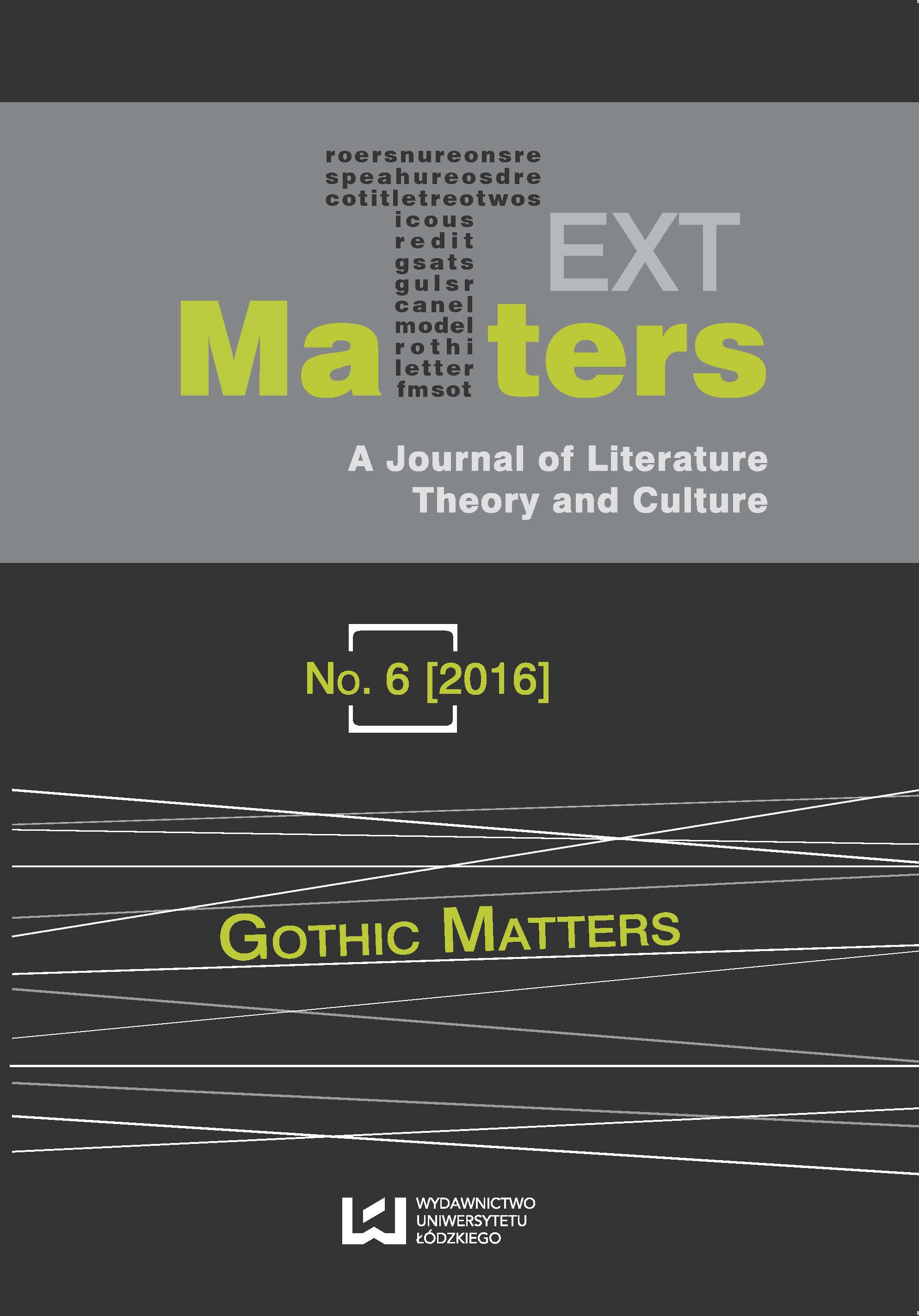Transgression of Postindustrial Dissonance and Excess: (Re)valuation of Gothicism in Jim Jarmusch’s Only Lovers Left Alive
Transgression of Postindustrial Dissonance and Excess: (Re)valuation of Gothicism in Jim Jarmusch’s Only Lovers Left Alive
Author(s): Justyna StępieńSubject(s): Studies of Literature, Theory of Literature
Published by: Wydawnictwo Uniwersytetu Łódzkiego
Summary/Abstract: The paper gives insight into the revaluation of popular Gothic aesthetics in Jim Jarmusch’s 2014 production Only Lovers Left Alive. Drawing on critical theory and the postmodern theoretical framework, the article suggests that the film transgresses contemporary culture immersed in a “culture of death” that has produced a vast amount of cultural texts under the rubric of “Gothicism.” By considering Jean Baudrillard’s concept of transaesthetics and Judith Halberstam’s writings on contemporary monstrosity, the paper shows that a commodified Gothic mode has lost its older deconstructive functions that operated on the margins of the mainstream. Now entirely focused on the duplication of the same aesthetic codes and signs, Gothic productions conform to the rules of postindustrial culture, enriching entertainment imagery with the neutralized concept of “otherness.” Hence, the article engages primarily with Jarmusch’s indie aesthetics that goes beyond easily recognizable patterns and generic conventions and allows the director to emphasize that the arts are rejuvenating forces, the antidote to a commoditized environment. Then, the focus is on the construction of main characters—Adam and Eve, ageless vampires and spouses—who thanks to nostalgic theatricality and performance reconfigure the mainstream monstrosity. Ultimately, the article emphasizes that Jarmusch’s film, to a large extent, becomes a warning against the inevitable results of advanced capitalism practiced on a global scale.
Journal: Text Matters: A Journal of Literature, Theory and Culture
- Issue Year: 2016
- Issue No: 6
- Page Range: 213-226
- Page Count: 14
- Language: English

